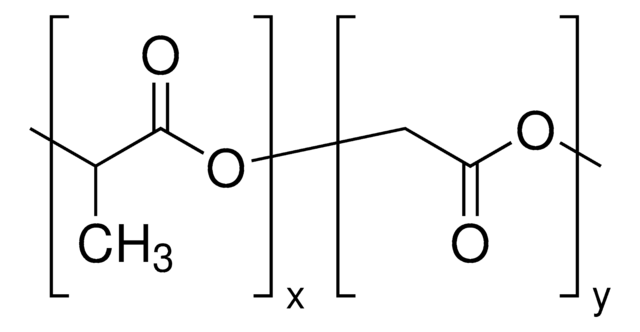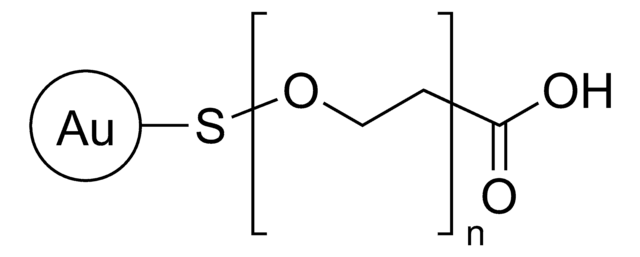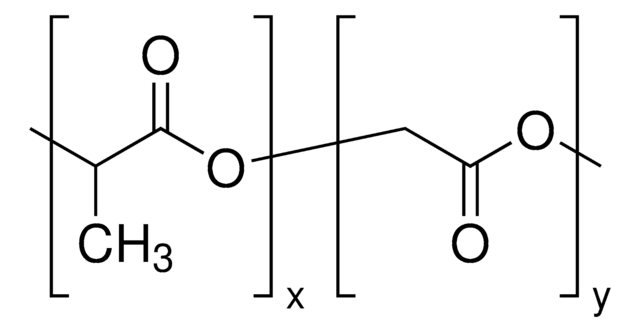913138
Poly(ethylene glycol) methyl ether-block-poly(lactide-co-glycolide)
PEG average Mn 2,000, PLGA average Mn 10,000, lactide:glycolide 50:50
Synonyme(s) :
PEG-PLGA, PEG2K-PLGA10K, Polyethylene glycol, mPEG-b-PLGA
About This Item
Produits recommandés
Niveau de qualité
Forme
powder or solid
Ratio alimentaire
lactide:glycolide 50:50
Poids mol.
PEG average Mn 2,000
PLGA average Mn 10,000 (by NMR)
Couleur
white to beige
Température de stockage
−20°C
Vous recherchez des produits similaires ? Visite Guide de comparaison des produits
Application
Code de la classe de stockage
11 - Combustible Solids
Classe de danger pour l'eau (WGK)
WGK 3
Point d'éclair (°F)
Not applicable
Point d'éclair (°C)
Not applicable
Faites votre choix parmi les versions les plus récentes :
Certificats d'analyse (COA)
Vous ne trouvez pas la bonne version ?
Si vous avez besoin d'une version particulière, vous pouvez rechercher un certificat spécifique par le numéro de lot.
Déjà en possession de ce produit ?
Retrouvez la documentation relative aux produits que vous avez récemment achetés dans la Bibliothèque de documents.
Notre équipe de scientifiques dispose d'une expérience dans tous les secteurs de la recherche, notamment en sciences de la vie, science des matériaux, synthèse chimique, chromatographie, analyse et dans de nombreux autres domaines..
Contacter notre Service technique






